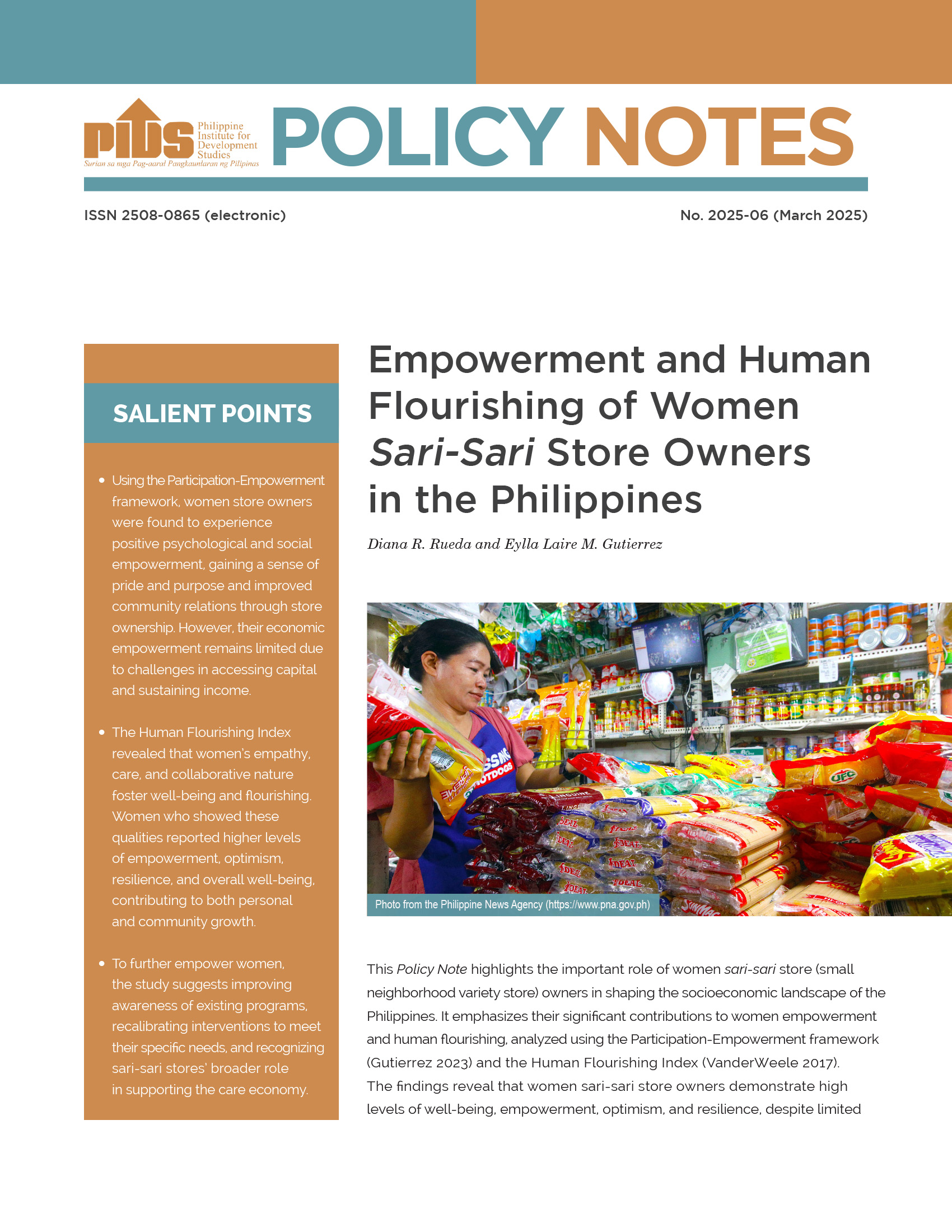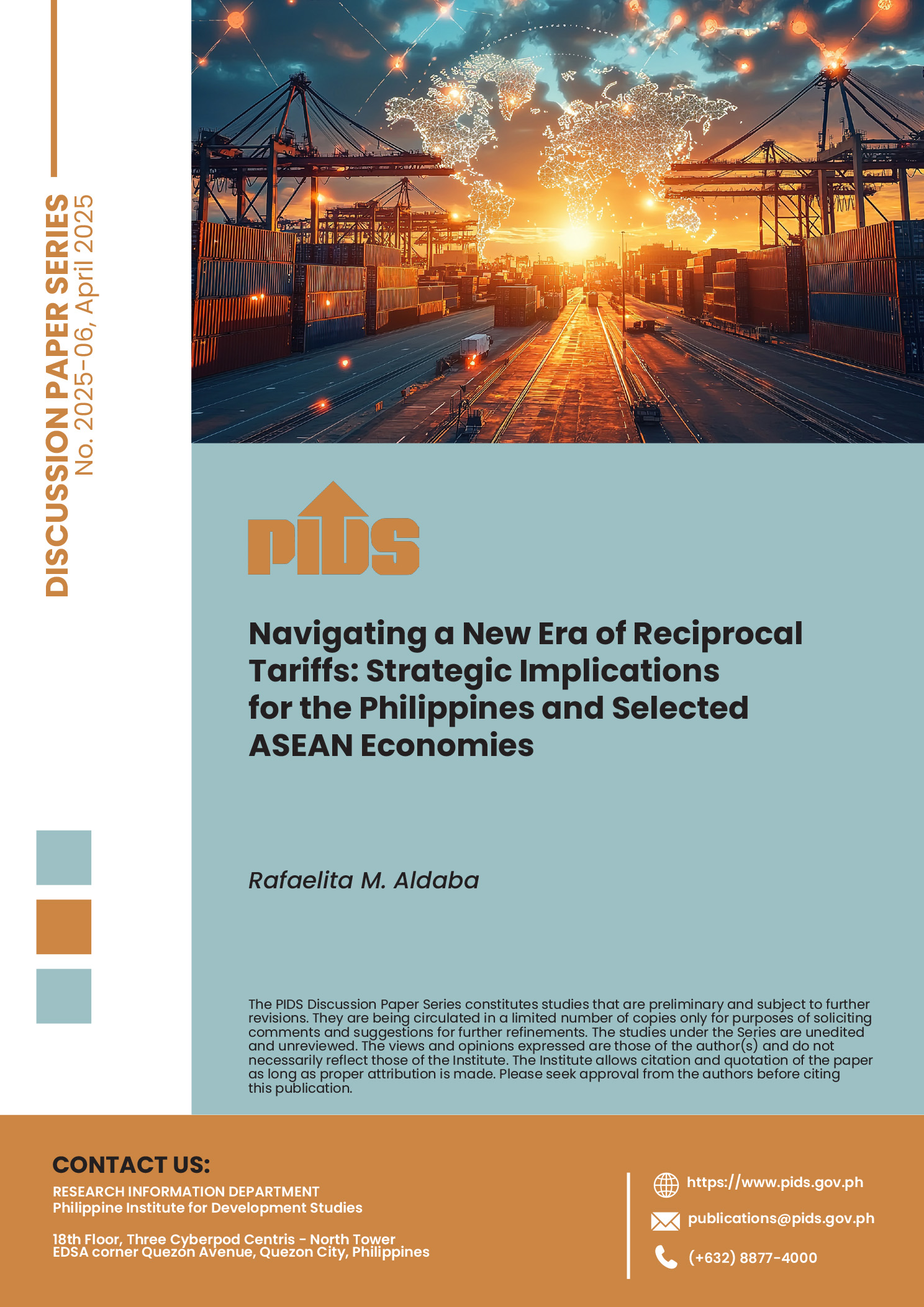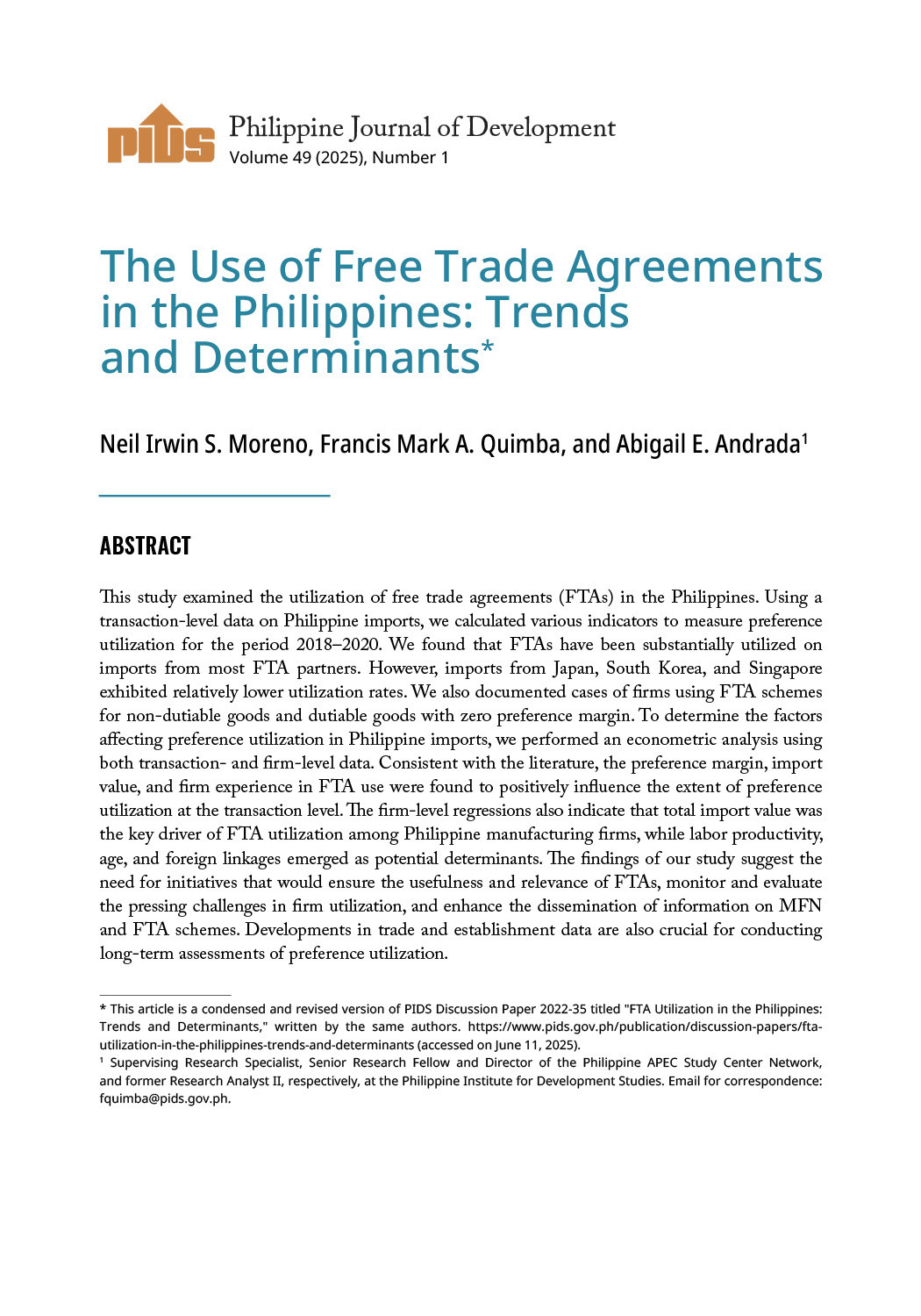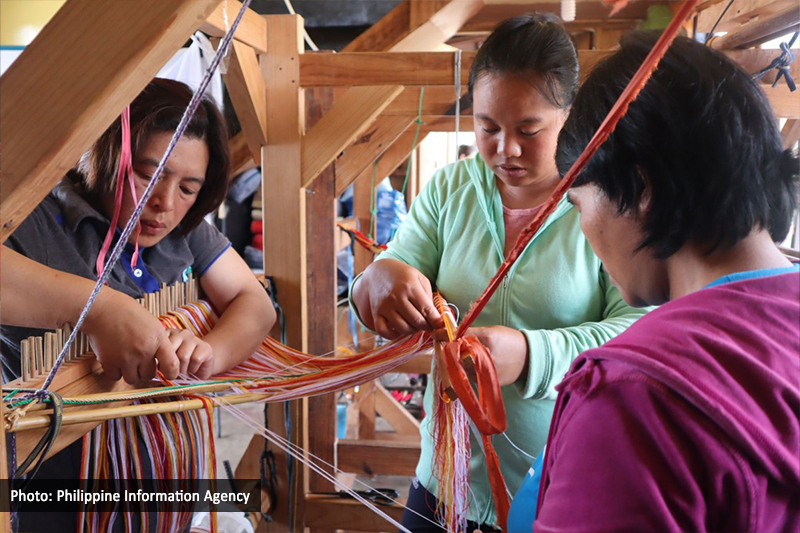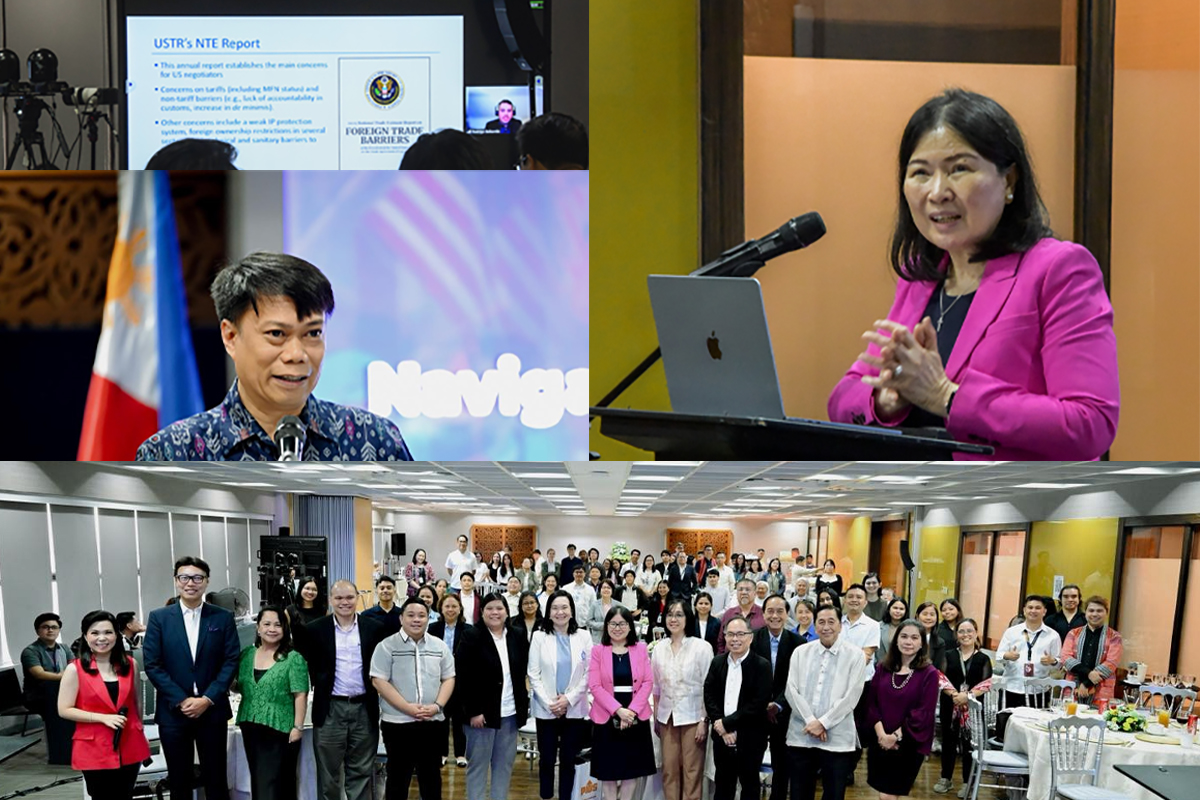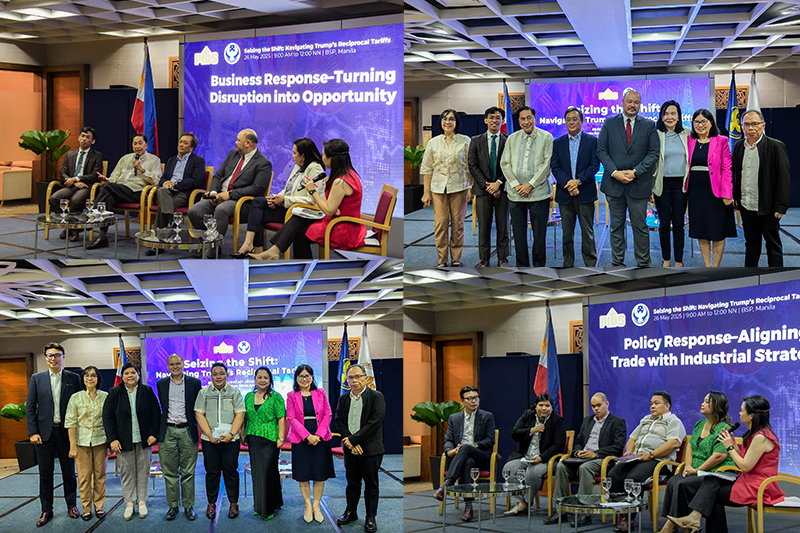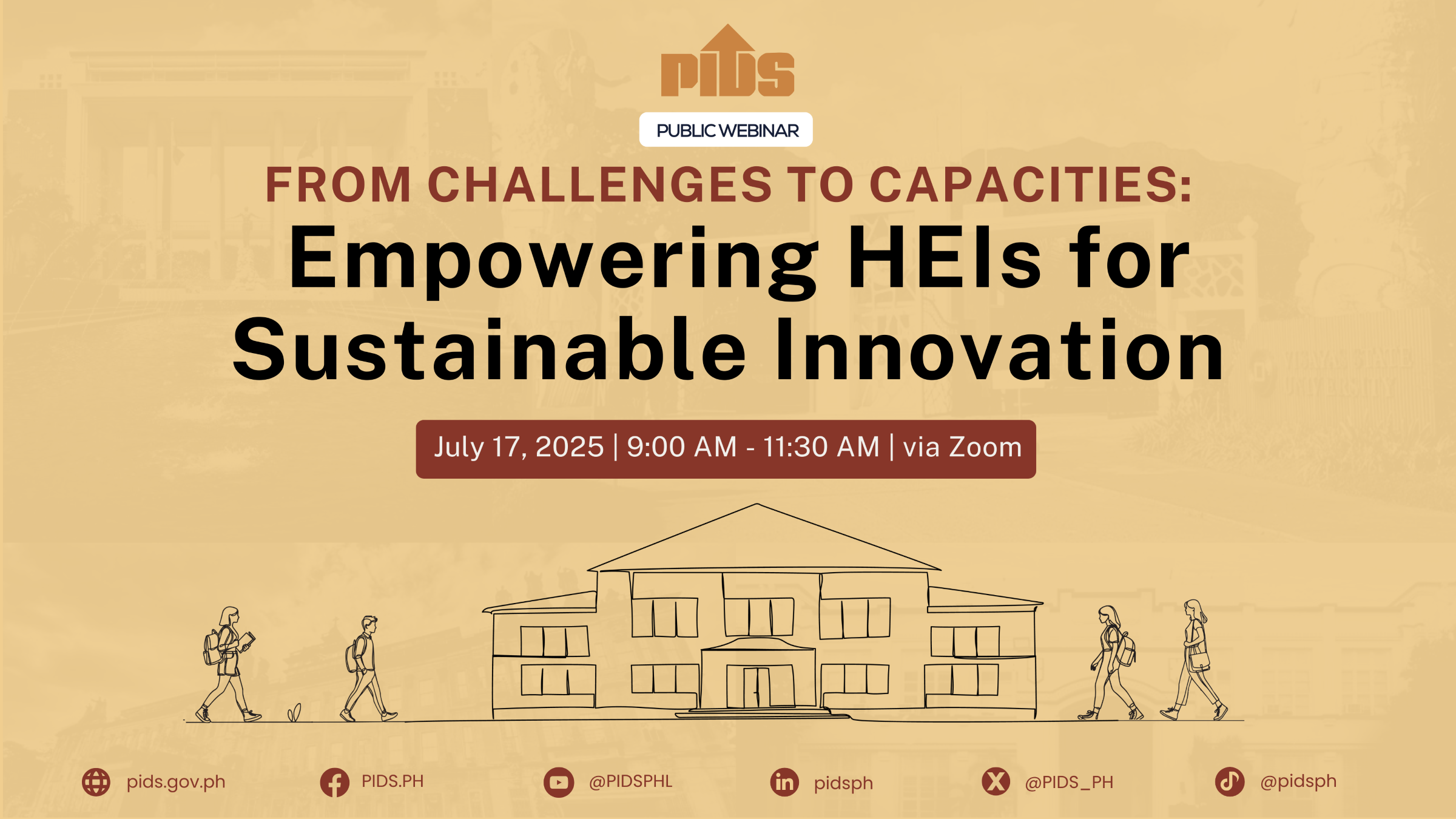Trade ministers from the 10-member countries of Association of Southeast Asian Nations (ASEAN) are moving towards an agreement to reduce the proliferation of non-tariff measures (NTMs) to further deepen economic integration of the world’s fastest growing region.
Trade and Industry Secretary Ramon M. Lopez told reporters that NTMs would be among the deliverables at the 49th ASEAN Economic Ministers Meeting, which will open today, Thursday, Sept. 7.
“Getting a commitment on the reduction of non-tariff barriers is one of the deliverables,” said Lopez, chair of the 49th AEM. There are also other non-controversial issues that the AEM is expected to be part in the agreement that the trade ministers will include in the joint declaration at the end of the five-day summit. This will also form part of the agenda items for endorsement to the ASEAN Leaders Summit in November this year.
Lopez said ministers may agree on coming up with certain criteria to reduce NTMs, but not really to eliminate the NTMs that are legitimate and important to a member country.
These NTMs come in the form of import controls, import permits, sanitary and phyto-sanitary measures, and product standards, among others.
According to Lopez, all ASEAN members are guilty of implementing NTMs but said these are allowed as long they really need these measures and not intended to protect their specific industries.
“Some of these NTMs are legitimate and are really needed and are justifiable, but not for industry protection,” he stressed noting that it is ironic that NTMs are delaying integration in ASEAN when the trade bloc has already removed most of its tariffs to further facilitate trade among members.
NTMs are now considered the remaining critical hurdles in the ASEAN integration since member countries are already implementing agreements on trade facilitation measures, investments and in the services.
Part of that is the ongoing harmonization of customers procedures, which have been resolved via trade repository and allowing greater transparency.
“There is no other problem in trade in services and investments, except in trade in goods,” he said.
A study by state think tank Philippine Institute for Development Studies (PIDS) noted that the proliferation of non-tariff measures among member-states of ASEAN has limited the capacity of the Philippines to trade with its neighbors.
A discussion paper titled “Review of Intra-ASEAN Non-Tariff Measures (NTMs)” by Senior Research Fellow Erlinda Medalla and Project Development Officer Melalyn Mantaring showed that NTMs in trade are “a more difficult obstacle to overcome.”
NTMs, as defined by United Nations Conference on Trade and Development, are “policy measures, other than ordinary customs tariffs, that can potentially have an economic effect on international trade in goods, changing quantities traded, or prices, or both.”
In general, the imposition of NTMs could be justified for different reasons, such as health, security, environment, and consumer protection. However, NTMs could also adversely affect global and regional production chains by unnecessarily increasing the cost of business of companies, according to the study.
“There are increasing and legitimate concerns that some NTMs are used mainly for protectionist reasons (trade distortion). In such cases, NTMs become simply non-tariff barriers (NTBs) to trade and investment,” the authors explained, saying that the latter is more protectionist in nature.
As part of the study, a survey was conducted to find out the impact of NTMs and NTBs on multinational firms, industry associations, and other federations of exporting industries and services in six ASEAN countries, namely, Indonesia, Singapore, Thailand, Philippines, Malaysia, and Viet Nam.
The survey showed that NTMs/NTBs pose additional costs to exporters, which vary across ASEAN countries — minimal for Singapore, moderate for the Philippines, and very high for Myanmar. In terms of clear and transparent rules on NTMs and NTBs, Singapore and Thailand are perceived as clear and transparent, the Philippines and Malaysia in mid-range, while Cambodia, Laos, and Myanmar are perceived to have the most unclear regulations.
The study also identified two factors that could make NTMs obstacles to trade: overly strict or complex requirements and procedural obstacles (practical administrative hurdles) that come with the NTMs.
In ASEAN, tariffs and nontariff measures are among the 10 priority measures that need to be achieved as core elements of the ASEAN Economic Community. While tariffs are already close to zero in the region, data show a rising trend in NTMs, which may possibly be “the result of greater commitments by ASEAN member-countries on notification,” the study said.
In the Philippines, among the most common NTMs are the technical barriers to trade and sanitary and phytosanitary measures. While it has remained relatively less restrictive when it comes to NTBs, previous studies suggest that many issues on implementation of NTMs in the country still remain.
Medalla and Mantaring emphasized that the positive effects of tariff reduction in the ASEAN region may be enhanced by reducing NTMs.
“The challenge for ASEAN countries, including the Philippines, is how to incorporate efficiency and facilitative measures in the implementation and administration of NTMs,” the authors explained, adding that removing unnecessary restrictions and streamlining procedures for NTMs would help.
More specifically, the study suggested promoting transparency by creating a comprehensive and updated database of NTMs in the region, regularly submitting notifications of new NTMs to the ASEAN Secretariat and the World Trade Organization, and establishing a robust mechanism to address NTM issues.
Furthermore, the authors underscored the importance of Customs Modernization and the Philippine National Single Window to address NTM issues related to licensing and permits.
For consistency and continuity, a “third party monitor and technical resource” to oversee ASEAN countries’ progress in mitigating the effects of NTMs on trade should be created.
Finally, the authors emphasized the need to capacitate firms to help them comply with NTMs. This may include awareness raising on what and how to comply with the requirements.
Trade and Industry Secretary Ramon M. Lopez told reporters that NTMs would be among the deliverables at the 49th ASEAN Economic Ministers Meeting, which will open today, Thursday, Sept. 7.
“Getting a commitment on the reduction of non-tariff barriers is one of the deliverables,” said Lopez, chair of the 49th AEM. There are also other non-controversial issues that the AEM is expected to be part in the agreement that the trade ministers will include in the joint declaration at the end of the five-day summit. This will also form part of the agenda items for endorsement to the ASEAN Leaders Summit in November this year.
Lopez said ministers may agree on coming up with certain criteria to reduce NTMs, but not really to eliminate the NTMs that are legitimate and important to a member country.
These NTMs come in the form of import controls, import permits, sanitary and phyto-sanitary measures, and product standards, among others.
According to Lopez, all ASEAN members are guilty of implementing NTMs but said these are allowed as long they really need these measures and not intended to protect their specific industries.
“Some of these NTMs are legitimate and are really needed and are justifiable, but not for industry protection,” he stressed noting that it is ironic that NTMs are delaying integration in ASEAN when the trade bloc has already removed most of its tariffs to further facilitate trade among members.
NTMs are now considered the remaining critical hurdles in the ASEAN integration since member countries are already implementing agreements on trade facilitation measures, investments and in the services.
Part of that is the ongoing harmonization of customers procedures, which have been resolved via trade repository and allowing greater transparency.
“There is no other problem in trade in services and investments, except in trade in goods,” he said.
A study by state think tank Philippine Institute for Development Studies (PIDS) noted that the proliferation of non-tariff measures among member-states of ASEAN has limited the capacity of the Philippines to trade with its neighbors.
A discussion paper titled “Review of Intra-ASEAN Non-Tariff Measures (NTMs)” by Senior Research Fellow Erlinda Medalla and Project Development Officer Melalyn Mantaring showed that NTMs in trade are “a more difficult obstacle to overcome.”
NTMs, as defined by United Nations Conference on Trade and Development, are “policy measures, other than ordinary customs tariffs, that can potentially have an economic effect on international trade in goods, changing quantities traded, or prices, or both.”
In general, the imposition of NTMs could be justified for different reasons, such as health, security, environment, and consumer protection. However, NTMs could also adversely affect global and regional production chains by unnecessarily increasing the cost of business of companies, according to the study.
“There are increasing and legitimate concerns that some NTMs are used mainly for protectionist reasons (trade distortion). In such cases, NTMs become simply non-tariff barriers (NTBs) to trade and investment,” the authors explained, saying that the latter is more protectionist in nature.
As part of the study, a survey was conducted to find out the impact of NTMs and NTBs on multinational firms, industry associations, and other federations of exporting industries and services in six ASEAN countries, namely, Indonesia, Singapore, Thailand, Philippines, Malaysia, and Viet Nam.
The survey showed that NTMs/NTBs pose additional costs to exporters, which vary across ASEAN countries — minimal for Singapore, moderate for the Philippines, and very high for Myanmar. In terms of clear and transparent rules on NTMs and NTBs, Singapore and Thailand are perceived as clear and transparent, the Philippines and Malaysia in mid-range, while Cambodia, Laos, and Myanmar are perceived to have the most unclear regulations.
The study also identified two factors that could make NTMs obstacles to trade: overly strict or complex requirements and procedural obstacles (practical administrative hurdles) that come with the NTMs.
In ASEAN, tariffs and nontariff measures are among the 10 priority measures that need to be achieved as core elements of the ASEAN Economic Community. While tariffs are already close to zero in the region, data show a rising trend in NTMs, which may possibly be “the result of greater commitments by ASEAN member-countries on notification,” the study said.
In the Philippines, among the most common NTMs are the technical barriers to trade and sanitary and phytosanitary measures. While it has remained relatively less restrictive when it comes to NTBs, previous studies suggest that many issues on implementation of NTMs in the country still remain.
Medalla and Mantaring emphasized that the positive effects of tariff reduction in the ASEAN region may be enhanced by reducing NTMs.
“The challenge for ASEAN countries, including the Philippines, is how to incorporate efficiency and facilitative measures in the implementation and administration of NTMs,” the authors explained, adding that removing unnecessary restrictions and streamlining procedures for NTMs would help.
More specifically, the study suggested promoting transparency by creating a comprehensive and updated database of NTMs in the region, regularly submitting notifications of new NTMs to the ASEAN Secretariat and the World Trade Organization, and establishing a robust mechanism to address NTM issues.
Furthermore, the authors underscored the importance of Customs Modernization and the Philippine National Single Window to address NTM issues related to licensing and permits.
For consistency and continuity, a “third party monitor and technical resource” to oversee ASEAN countries’ progress in mitigating the effects of NTMs on trade should be created.
Finally, the authors emphasized the need to capacitate firms to help them comply with NTMs. This may include awareness raising on what and how to comply with the requirements.

